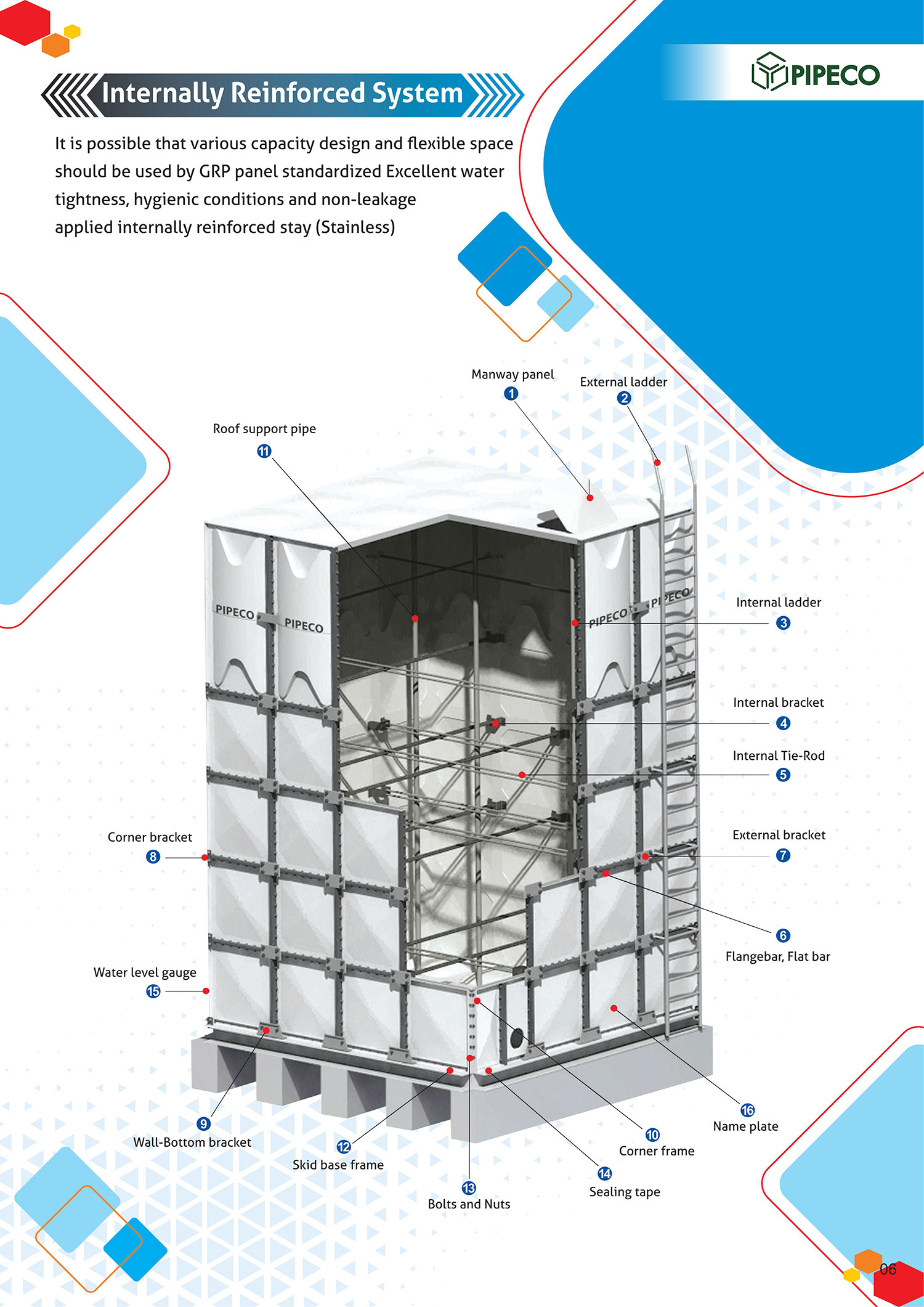Overview: This long-form technical guide reviews modern FRP tank liner solutions—vinyl ester systems, thermoplastic liners (PVDF, PP, ECTFE/PTFE), hygienic gelcoats and hybrid FRP-thermoplastic architectures—comparing corrosion resistance, hygienic performance, manufacturing methods and lifecycle economics across chemical, maritime, municipal and food-grade applications.
Internal liners are the primary defense for FRP (Glass-fiber Reinforced Polymer / GRP) storage tanks. A well-engineered liner isolates aggressive media from the structural laminate, prevents permeation, resists chemical attack and maintains product purity. Modern liners enable FRP tanks to deliver 20–40 years of reliable service in environments that would rapidly degrade unlined materials.
Critical performance dimensions are:

Vinyl ester liners remain the preferred choice for broad chemical resistance. Two classes dominate:
Key benefits: chemical durability, hydrolysis resistance, and toughness to resist cracking under stress.
Isophthalic polyester liners are widely used for potable water, municipal and wastewater tanks where extreme chemical resistance is not required. With proper gelcoat and veil treatment they can meet sanitary standards and provide a favorable price/performance balance.
Thermoplastic liners are often supplied as welded sheets, extrusion-bonded layers or sprayable fluoropolymer coatings:
For potable water, food & beverage and pharmaceutical tanks, modern gelcoats provide:
Newer gelcoats combine low extractables with anti-biofouling performance—critical for certified hygienic tanks.
Contemporary FRP liner design uses a layered approach where each layer plays a defined role:
Correct layer sequencing, resin compatibility and cure control eliminate delamination risk and reduce diffusion pathways.

Hygienic FRP tanks must meet regulatory and operational standards. Typical requirements include:
Pipeco recommends specifying certified gelcoats and conducting extractables testing and microbial challenge testing for any hygienic application.
| Application | Recommended Liner(s) | Key Considerations |
|---|---|---|
| Chemical processing / Acids | Novolac VE, PTFE, ECTFE | Concentration, temp, oxidizers; low permeability required |
| Potable water / Municipal | Isophthalic polyester with hygienic gelcoat, NSF-61 certified VE | Low extractables, disinfectant resistance, smooth finish |
| Marine / Desalination | VE + anti-erosion gelcoat; hybrid VE/thermoplastic for severe salt spray | Salt corrosion, UV, abrasion resistance |
| Pharma / Semiconductor fluids | PVDF, ECTFE liners | Ultra-clean surfaces, low particulation, chemical purity |
| Wastewater / Biogas | VE with corrosion barrier layer | Biological acids, H2S, abrasion |
Manufacturing innovations directly influence liner quality and longevity:
Quality assurance (QA) should include holiday testing, adhesion tests, full-band permeability checks and accelerated ageing cycles.
High-quality liners reduce total cost of ownership (TCO) by extending inspection intervals and preventing catastrophic failures. Key considerations:
When designed and manufactured correctly, FRP tanks with advanced liners can provide 25–40 years of service, outperforming many metallic and rubber-lined alternatives.
Pipeco recommendation: For mixed-service facilities (e.g., potable + chemical), consider hybrid liners (VE + PVDF) or segregated containment to meet both corrosion and hygiene demands.
Contact Pipeco for Engineering ConsultationA: With correct material selection, proper manufacture and routine maintenance, modern FRP liners commonly achieve 20–40 years of service. Lifespan depends on media chemistry, temperature cycling and mechanical stresses.
A: Minor surface damage to VE or polyester liners can be repaired with qualified composite patches and post-cure. Thermoplastic liners require welding or patching with compatible thermoplastic. Major failures should be evaluated by a certified composite technician.
A: Yes. When specified with hygienic gelcoats and certified resins (NSF-61, FDA compatible), FRP tanks are widely used for potable water storage. Smooth, low-extractable surfaces and appropriate disinfection resistance are required.
Experience the brand Trusted by Renowned Companies across the GLOBE.

Pipeco stands at the forefront of the market, recognized as a premier manufacturer, supplier, and exporter specializing in top-tier GRP water tanks, stainless steel water tanks, and SMC manhole covers, FRP Water Tank, Fiberglass Tank, SMC Water Tank committed to delivering unparalleled quality and excellence.